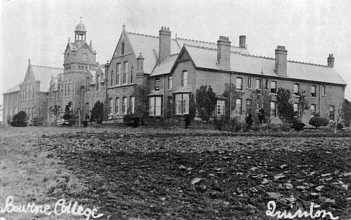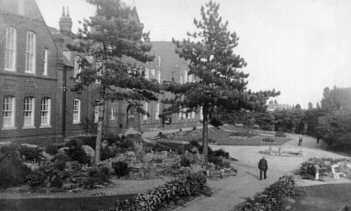Restoring the Bourne College First World War Memorial"The Birmingham Historian" 2001 | ||||||||
|
Bourne College was a school for the sons of primitive Methodists, however it was later opened to boys of parents of other denominations. The college was named after it's founder, Hugh Bourne and built in 1882 on a 19-acre site at Spies Lane. After World War One, numbers declined due to increasing provision of state secondary schools, and the college closed in 1928.
Fifteen of the old boys were killed on active service in the First World War up to the end of 1916 and of the 200 who served in the nation's armed forces 30 names appeared on the very imposing marble war memorial which was erected by public subscription in 1921. It was in July of that year that Alderman H I Sayer unveiled it.
When the college closed the war memorial was re-erected in the College Road Methodist Chapel. However, due to the construction of the M5 motorway, the College Chapel had to be demolished in 1967 and sadly no place was found in the new Methodist Church for the memorial and it was destroyed with the building. The only memory that remains is a photograph (as above) kept at the Birmingham Reference Library and the inscription on the plate. After the closure of the college, the building were rebuilt and restyled, and reopened as Quinton Hall in 1931. It was a residential home for elderly men, administered by Birmingham Corporation. It was eventually demolished in 1978, and the six acre site was offered for sale. In 1981, Chantry-Keys Homes Limited bought it for £403,000. They demolished the 105-bed home and built the present Chantry Crescent estate in its place. One of the roads, Hoosen Close, was named after the headmaster of Bourne College, T. J. Hoosen.
The executive committee of Quinton Local History Society now feel that the memorial should be resurrected as a fitting tribute to those who gave the ultimate sacrifice. The society has applied to The Birmingham City Council LILA Fund for a contribution toward the fund, which up to now has reached just over £100. The press have also been alerted to the campaign and below is an article that appeared in the Evening Mail on Thursday 18th ]anuary 2001.
|
Click here to go back to the Conservation page.



